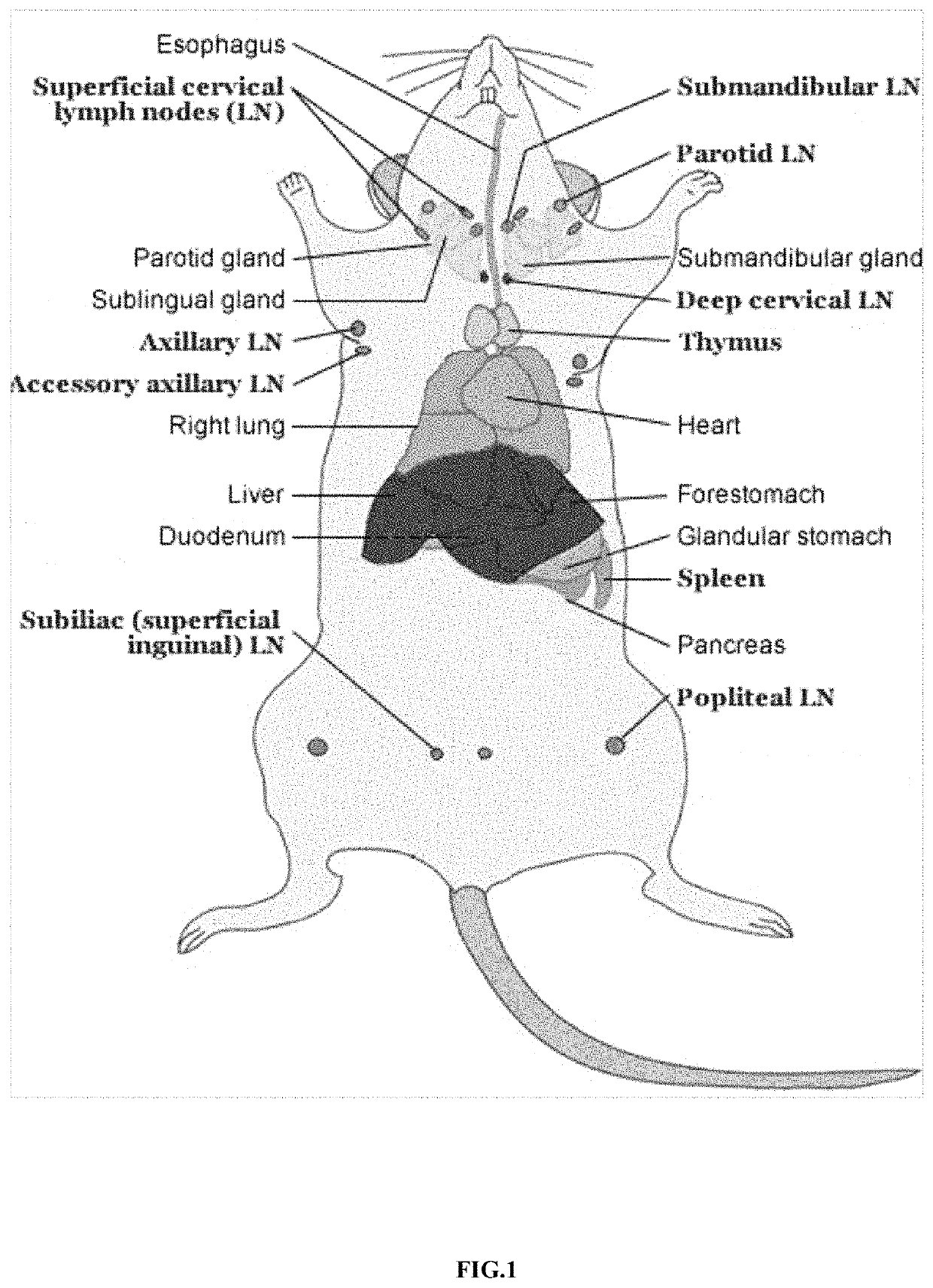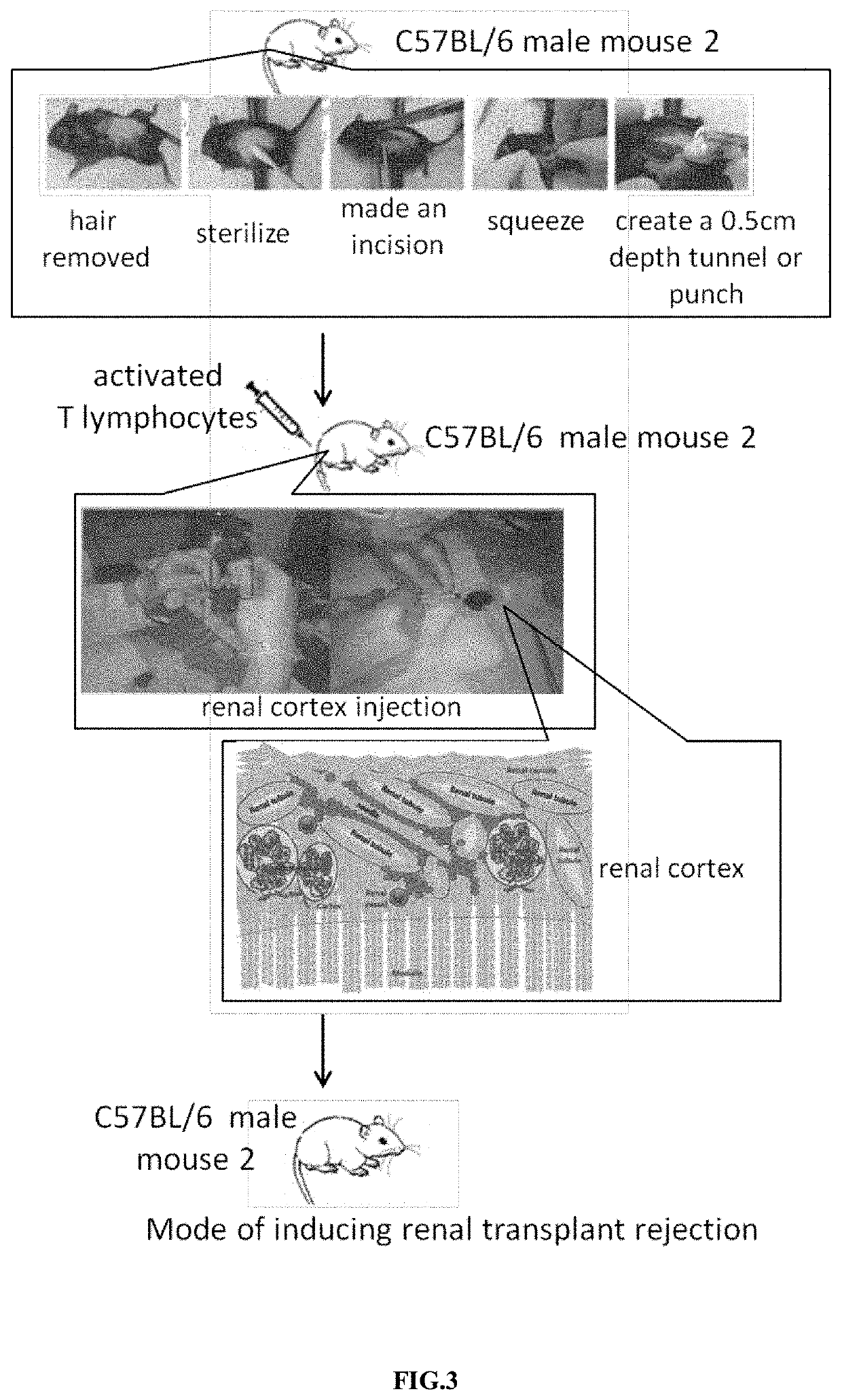Mode of inducing renal transplant rejection on animals and its manufacturing approach
a technology of kidney transplant and manufacturing method, applied in the field of simplified model of kidney transplant in animals, can solve the problems of acute and chronic renal transplant rejection of patients, high risk of kidney transplantation, system bottleneck process, etc., and achieve the effect of inducing renal transplant rejection effectively
- Summary
- Abstract
- Description
- Claims
- Application Information
AI Technical Summary
Benefits of technology
Problems solved by technology
Method used
Image
Examples
example 1
and Culturing an Activated T Lymphocyte Platform In Vitro
[0028]Culturing Activated T-Lymphocytes In Vitro
[0029]The dendritic cells of the male mouse C57BL / 6 were rushed out of the bone marrow (as shown in FIG. 1), and the dendritic cells were cultured in 6 ml Roswell Park Memorial Institute (RPMI) medium and granulocyte-macrophage colony-stimulating factor (GM-CSF) (20 ng / mL) for 9 days, and dendritic cells were stimulated with 100 ng / ml lipopolysaccharide (LPS) on the 9th day for about 24 hours; The lymph nodes of the mouse C57BL / 6 were found out, and the T lymphocytes were obtained (as shown in FIG. 1). CD4+ and CD8+ T cells were selected from these T lymphocytes by microbeads. Then, the dendritic cells and selected CD4+ and CD8+ T cells were co-cultured for 13 days to obtained the activated T lymphocytes (with Y chromosome memory) in vitro (FIG. 2).
example 2
tation of Cultured T Lymphocytes In Vitro
[0030]In order to facilitate the subsequent administration of activated T lymphocytes, we created a tunnel or pouch of the renal cortex in another C57BL / 6 male mouse. The surgical process for the manufacture of tunnels or pouches in renal cortex was shown in FIG. 3. The bilateral costal and hypochondriac region of the 6-10 weeks old mice were used for surgery. First, the hair was removed and sterilized. Then we created an opening near the kidney and squeezed out the kidneys with a sterile glove. Next, a needle No. 31 was used to make a 0.2 cm incision, and we injected the mouse kidney cortex along the long diameter to make a 0.5 cm depth tunnel or pouch to facilitate subsequent administration of activated T cells in vivo. 1×106 to 3×106 activated mouse T lymphocytes were counted in a cell counter, and these cells were injected into the tunnel or pouch made in above-mentioned renal cortex of another male mouse. The opening was closed by a supe...
example 3
ation Results from Tissue Slices
[0031]FIG. 5 showed the results of the hematoxylin and eosin (H & E) stain after the mouse kidney was sliced. The phosphate buffer solution (PBS) was injected into the tunnel or pouch of the renal cortex in the control group. 1×106 activated T cells were injected into the tunnel or pouch of the renal cortex in the experimental group. From 0 to 14th day after injection, the kidney slices from the sacrificed mouse in the control group and in the experimental group were stained. The slices were observed under a 400-fold optical microscope with a scale of 50 μm. The arrows indicated that the renal tubules were not only structurally damaged by severe mononuclear infiltration, but also was found having renal tubular dilatation, renal tubular destruction, and extensive interstitial inflammatory cell infiltration. The results showed continuously pathological change in renal tissue both in control group and experimental group on day 0-day 14. There was no diff...
PUM
| Property | Measurement | Unit |
|---|---|---|
| depth | aaaaa | aaaaa |
| diameter | aaaaa | aaaaa |
| diameter | aaaaa | aaaaa |
Abstract
Description
Claims
Application Information
 Login to View More
Login to View More - R&D
- Intellectual Property
- Life Sciences
- Materials
- Tech Scout
- Unparalleled Data Quality
- Higher Quality Content
- 60% Fewer Hallucinations
Browse by: Latest US Patents, China's latest patents, Technical Efficacy Thesaurus, Application Domain, Technology Topic, Popular Technical Reports.
© 2025 PatSnap. All rights reserved.Legal|Privacy policy|Modern Slavery Act Transparency Statement|Sitemap|About US| Contact US: help@patsnap.com



